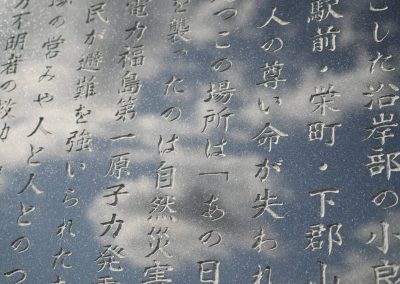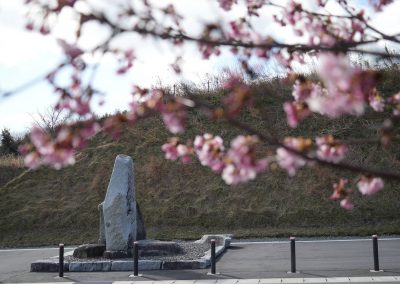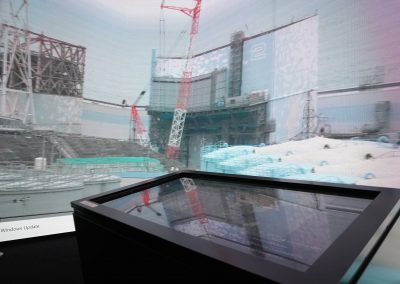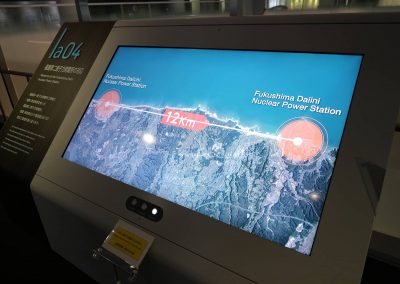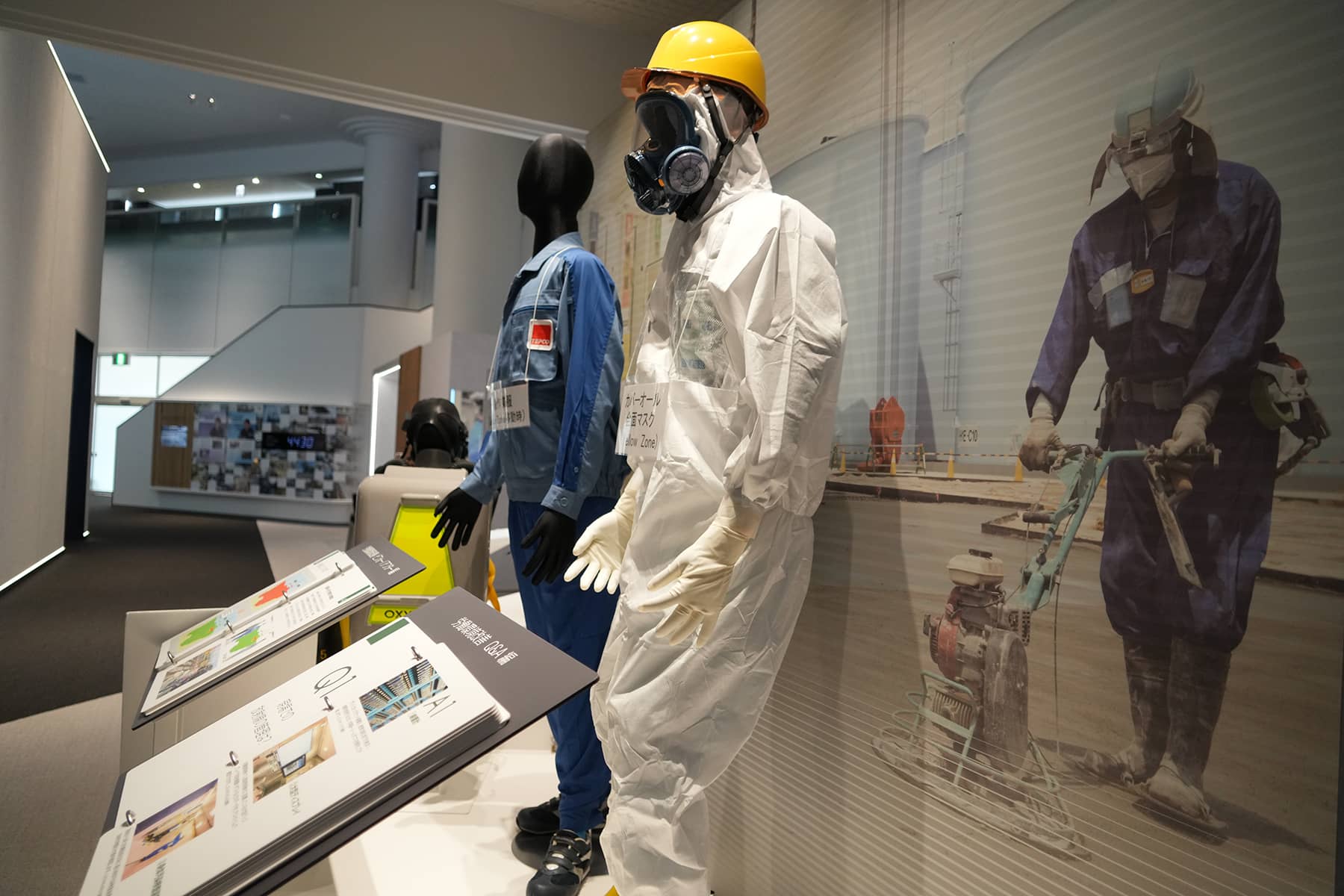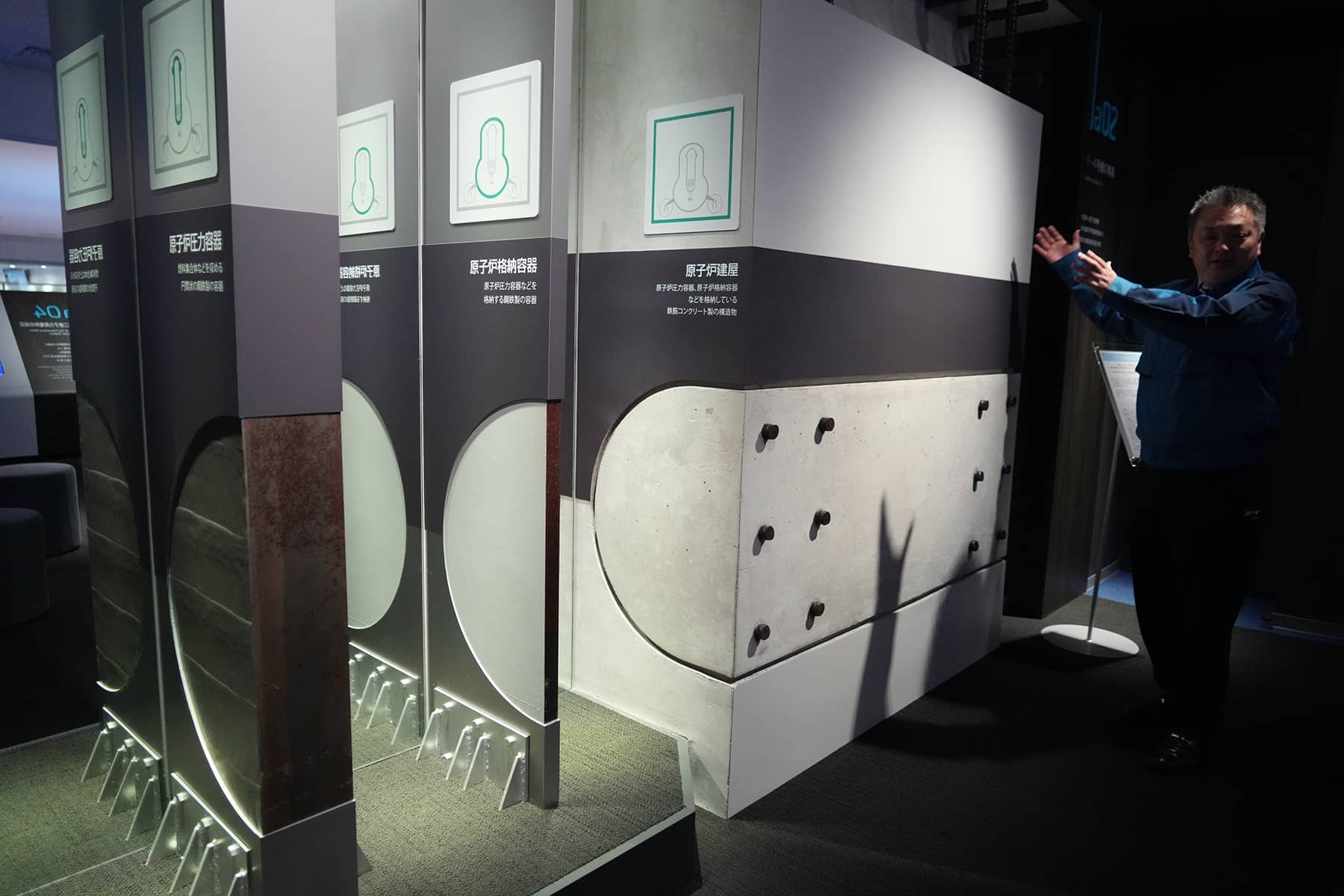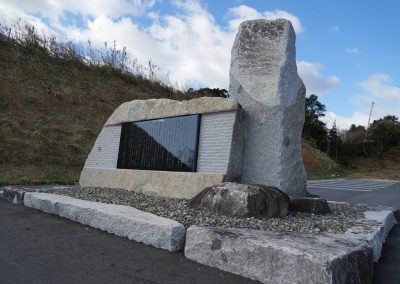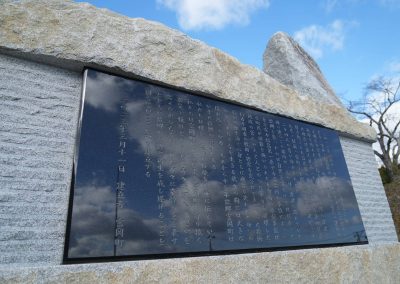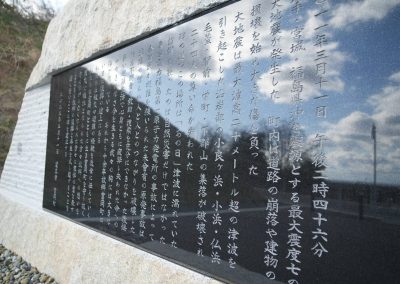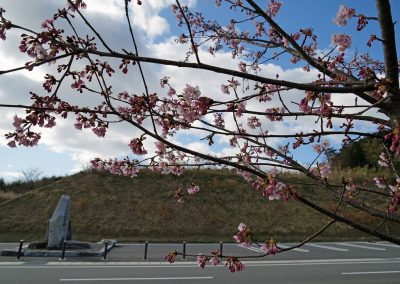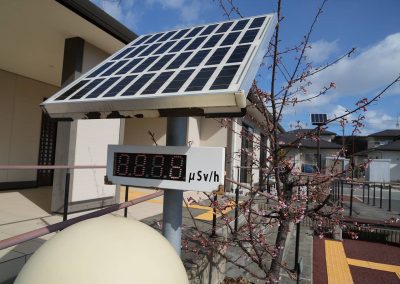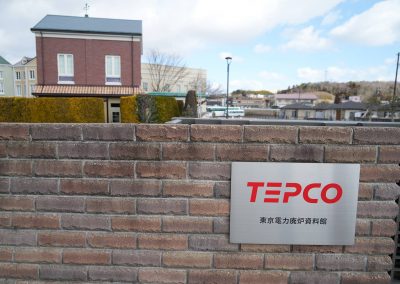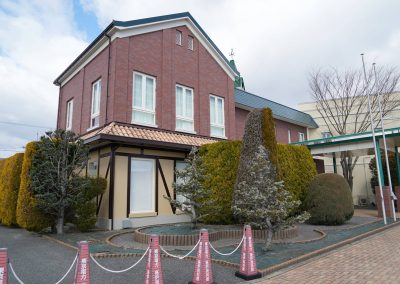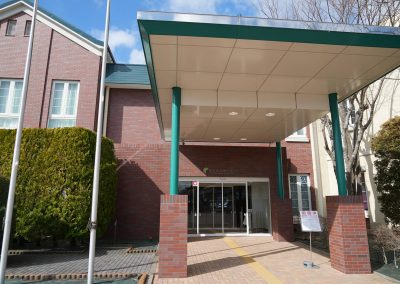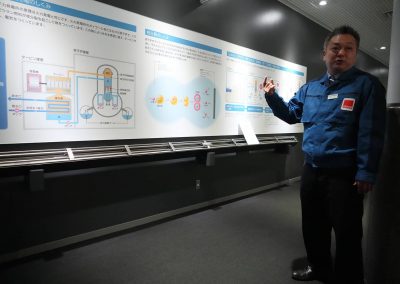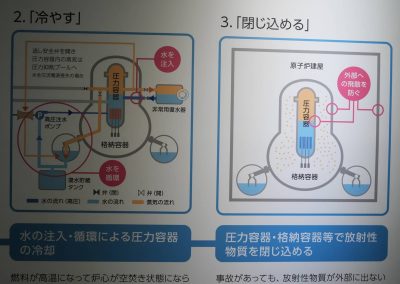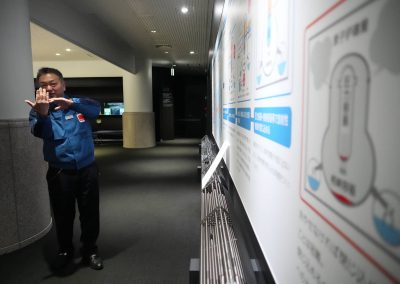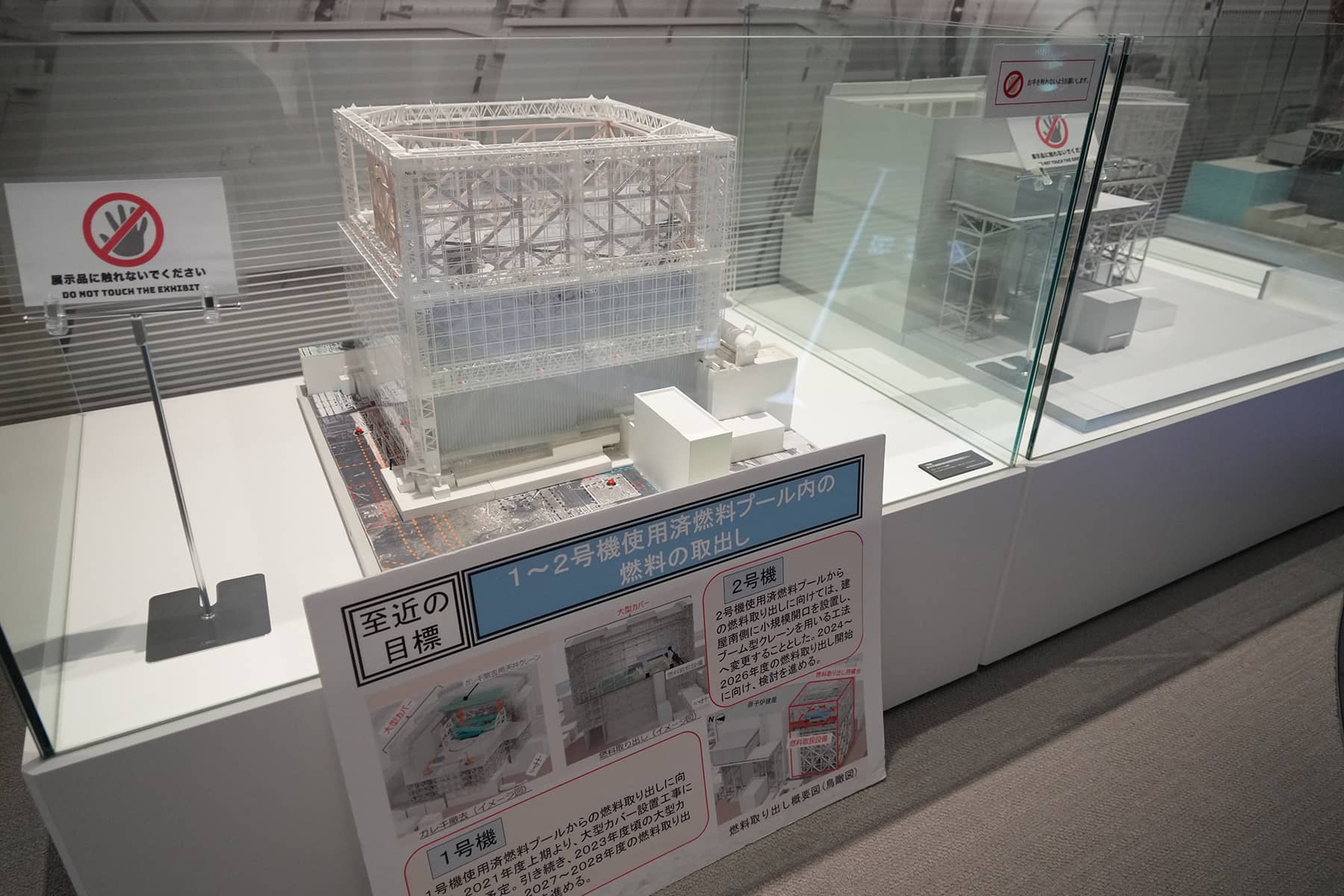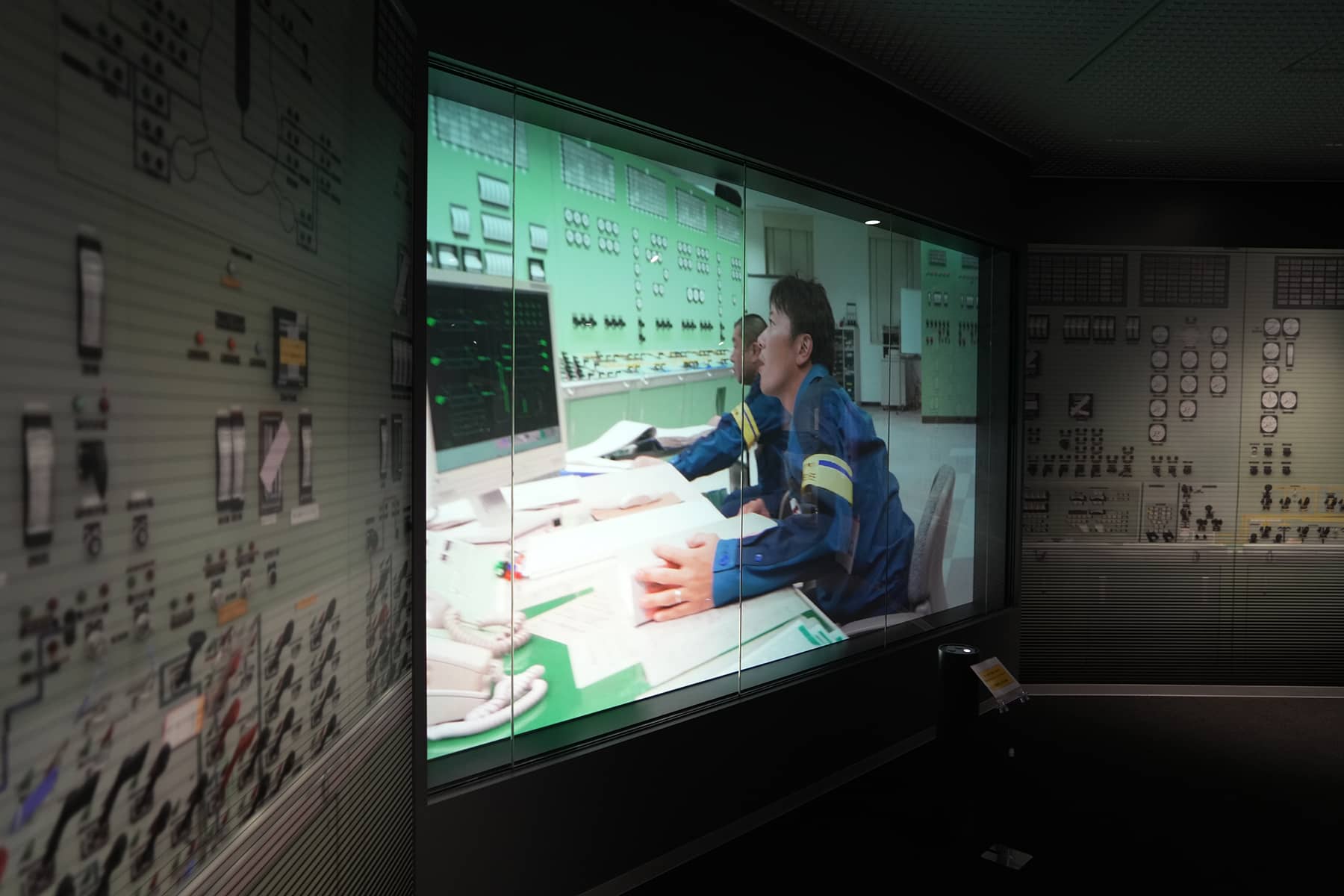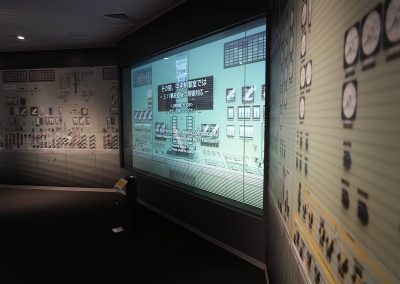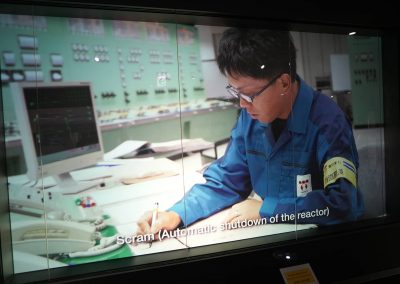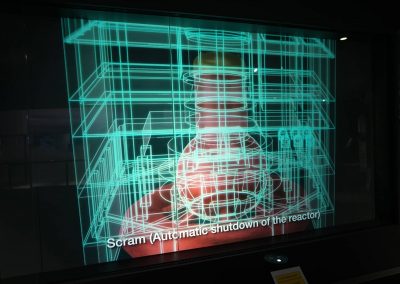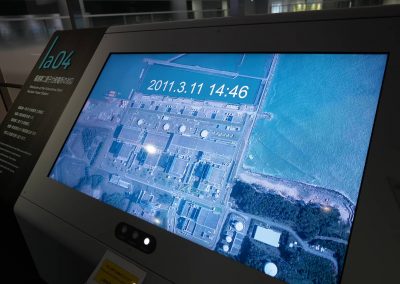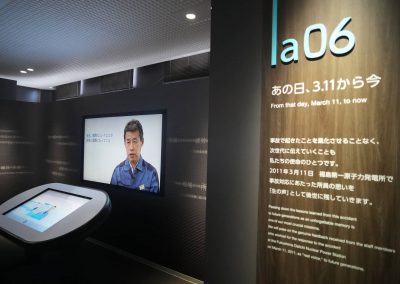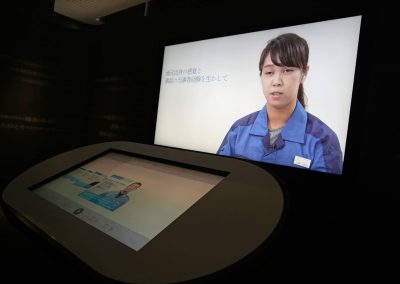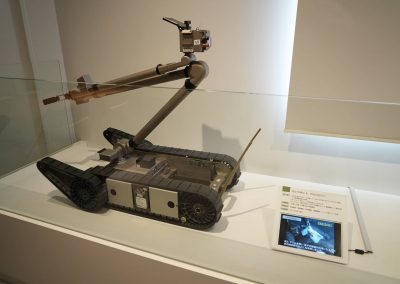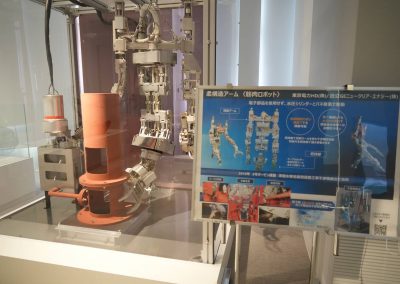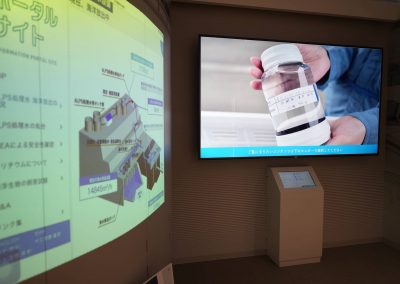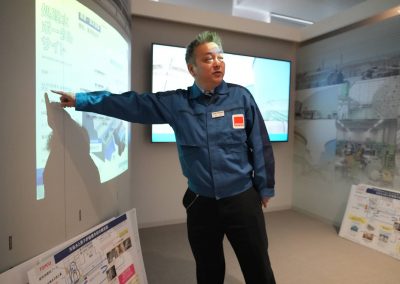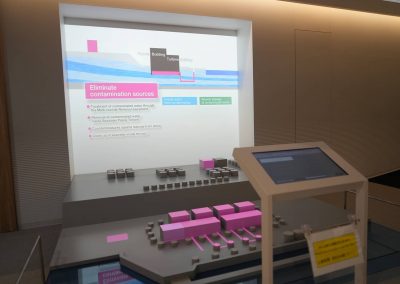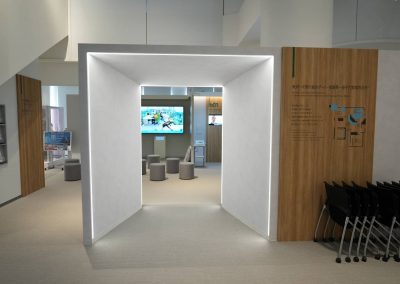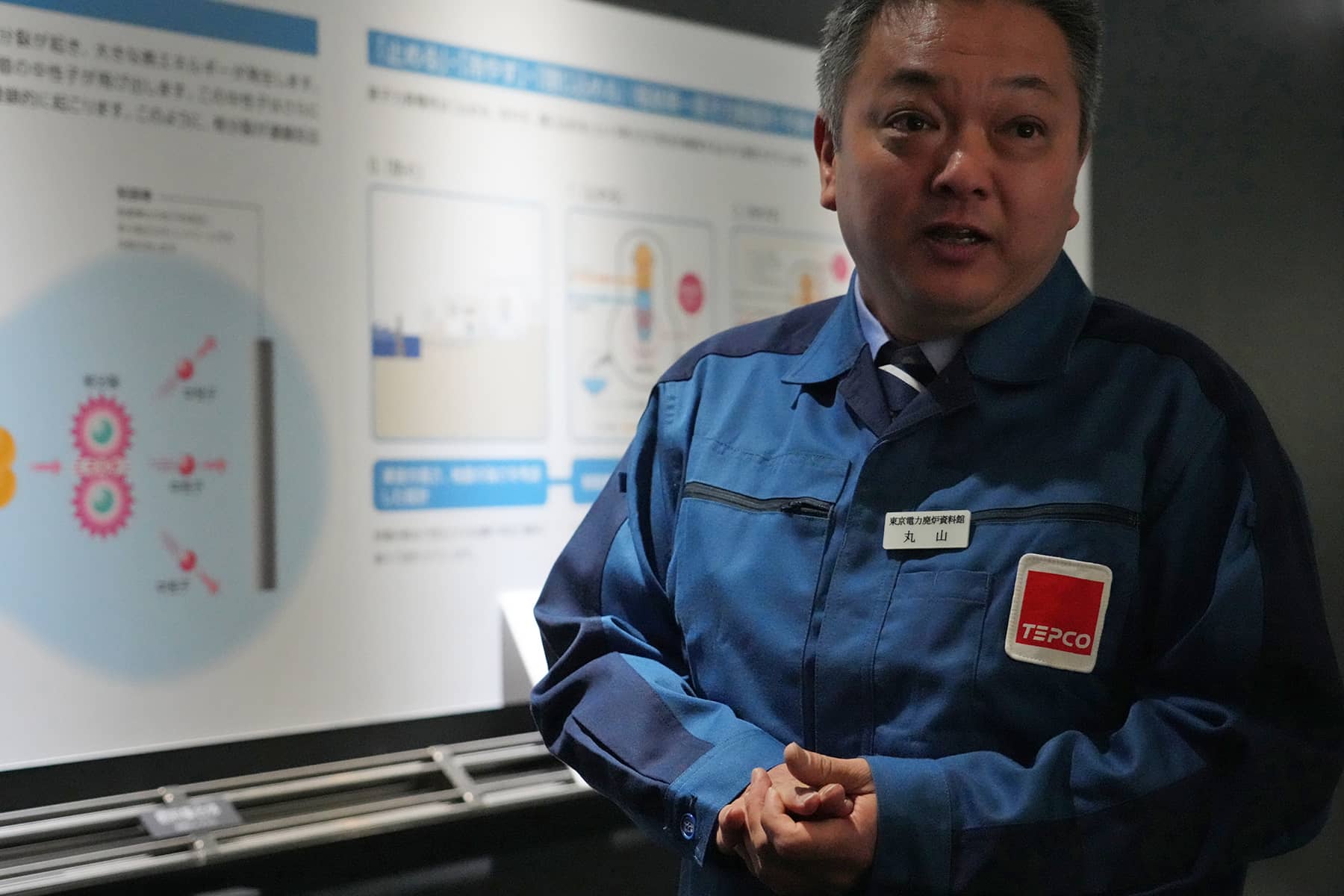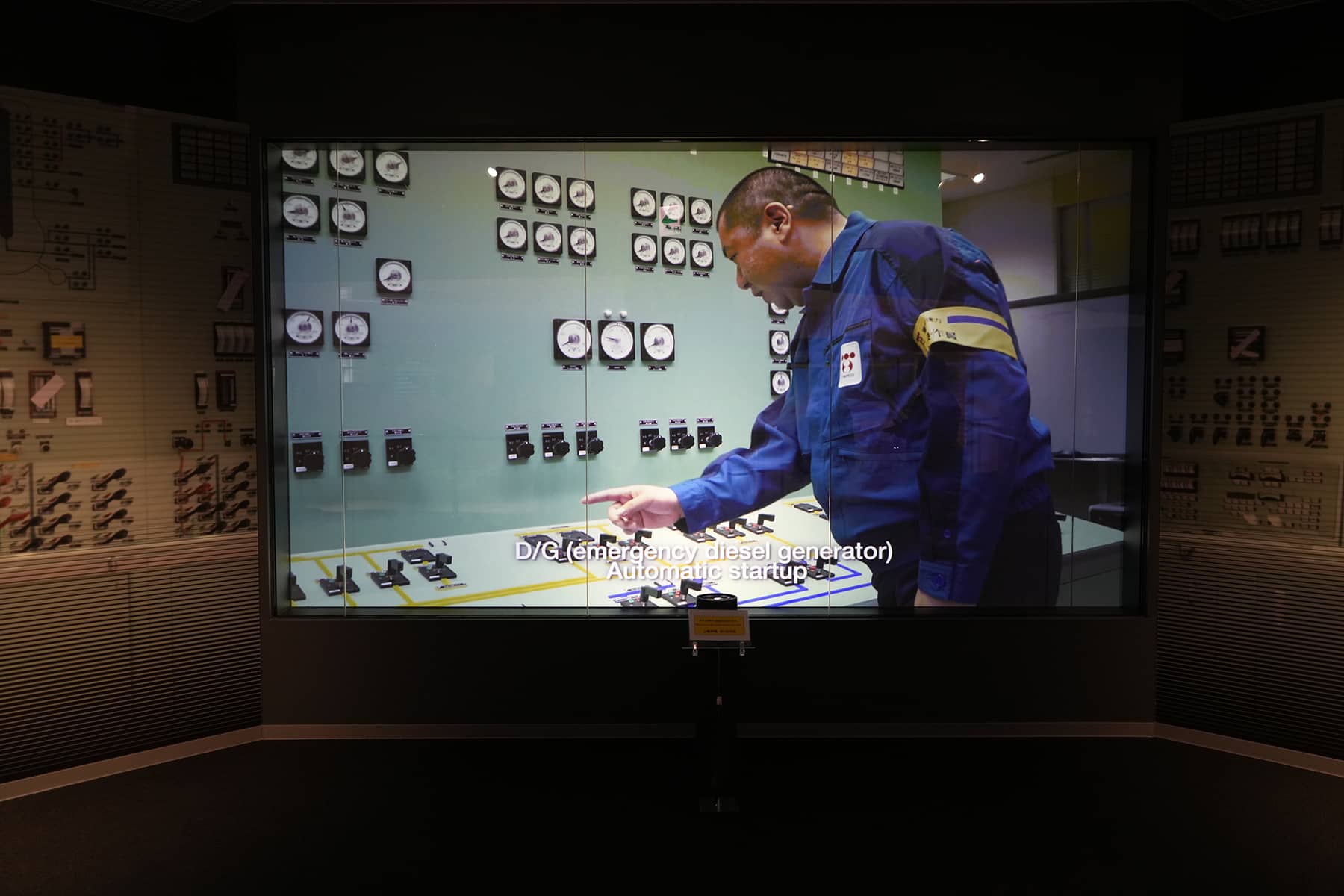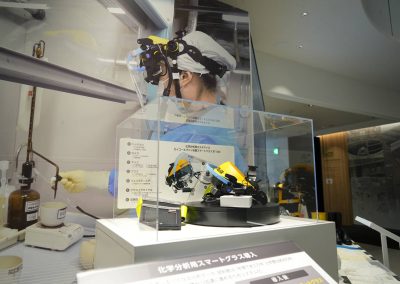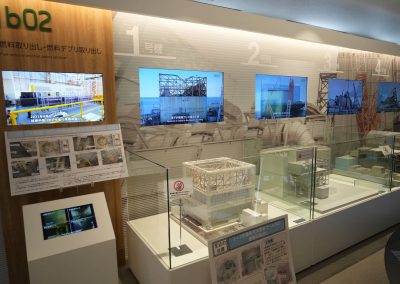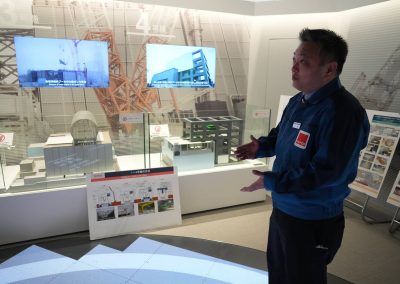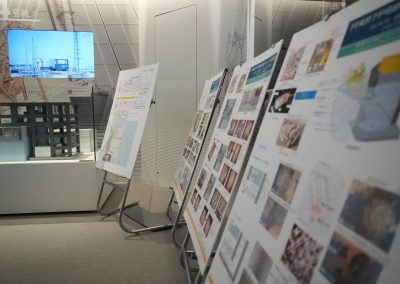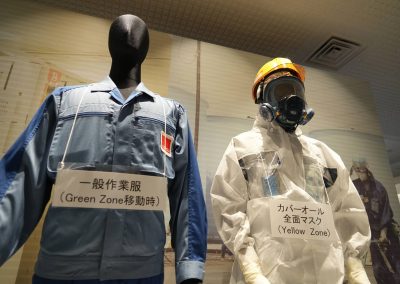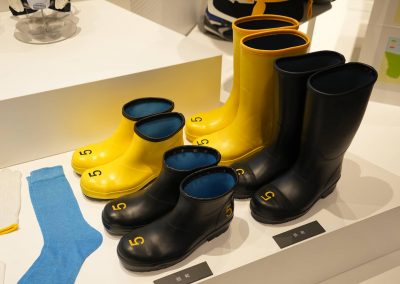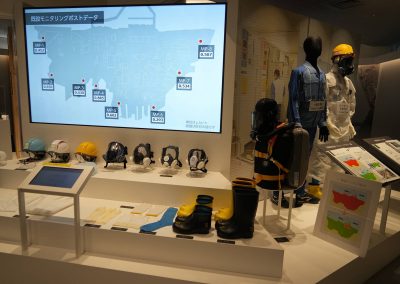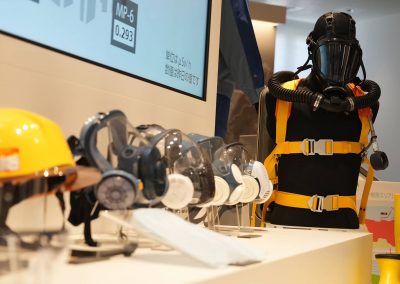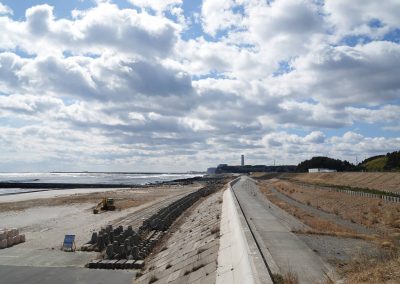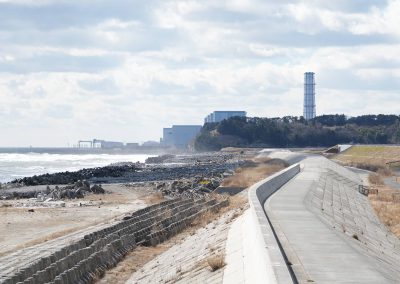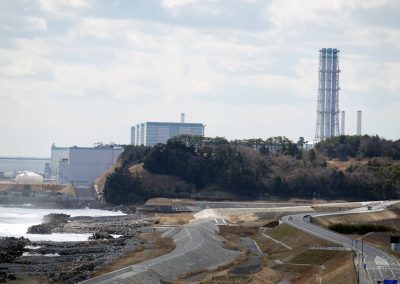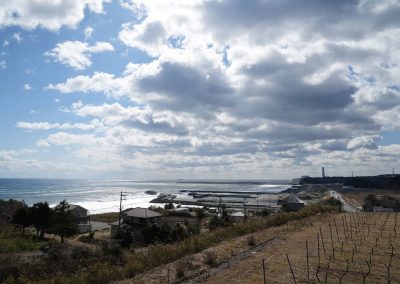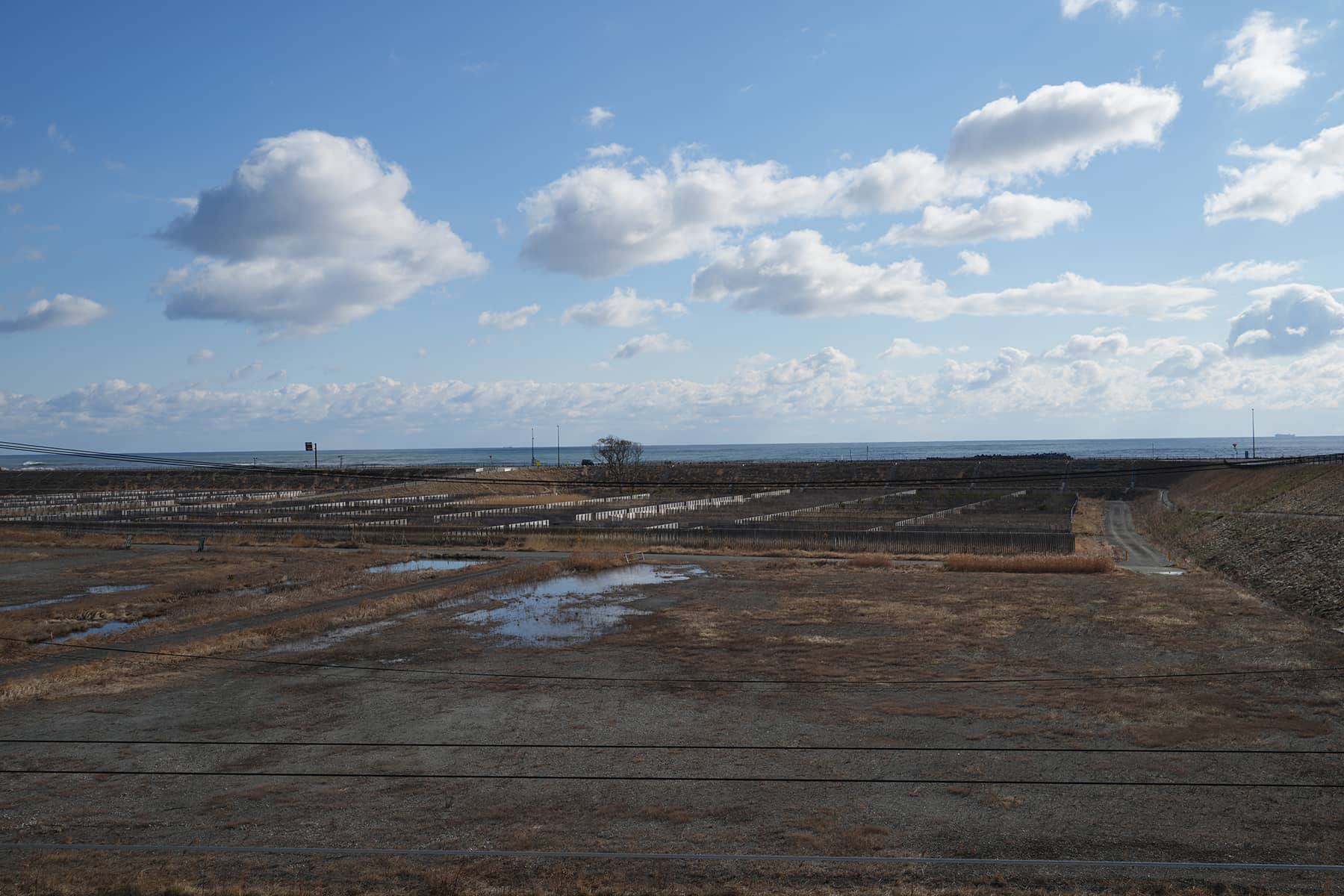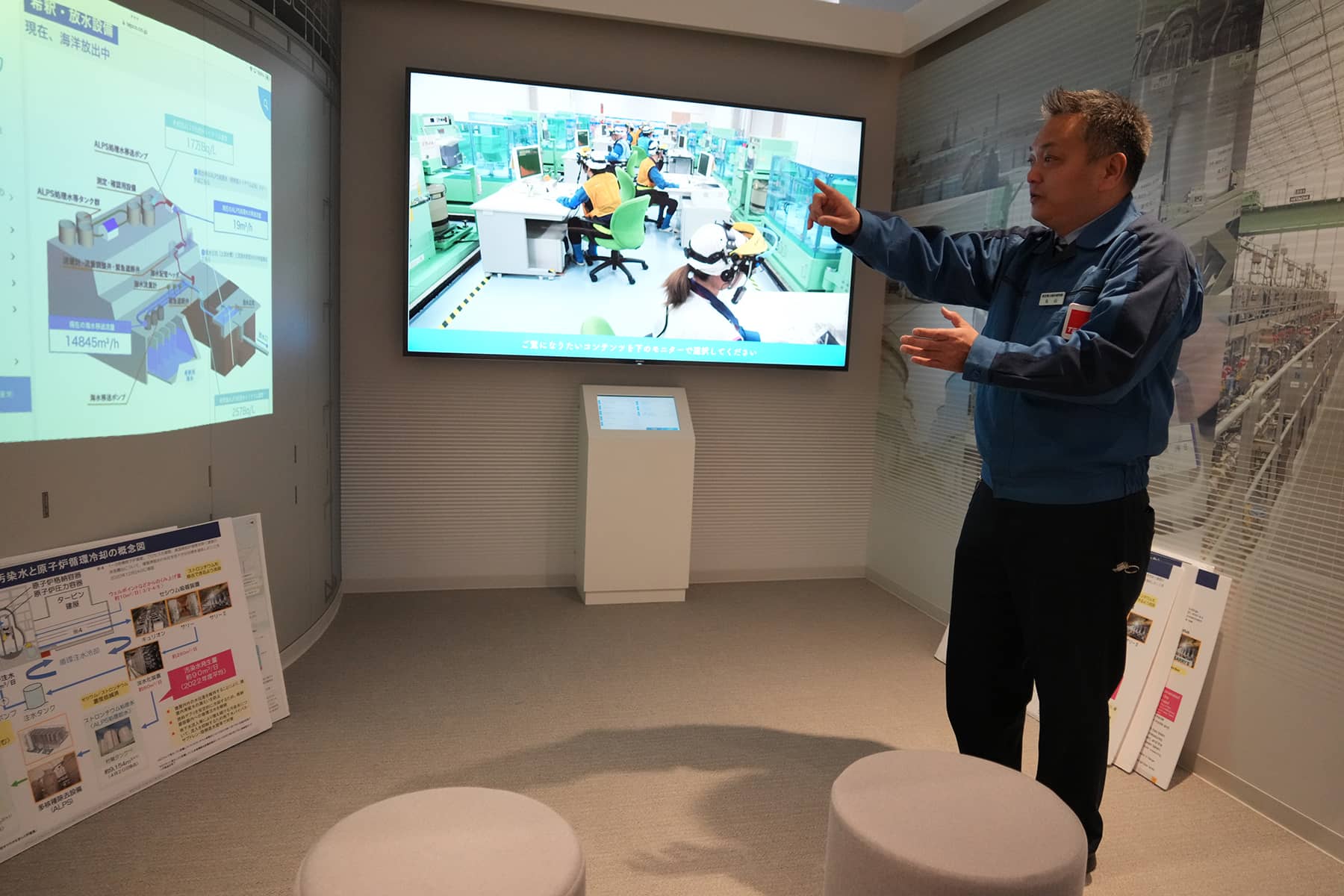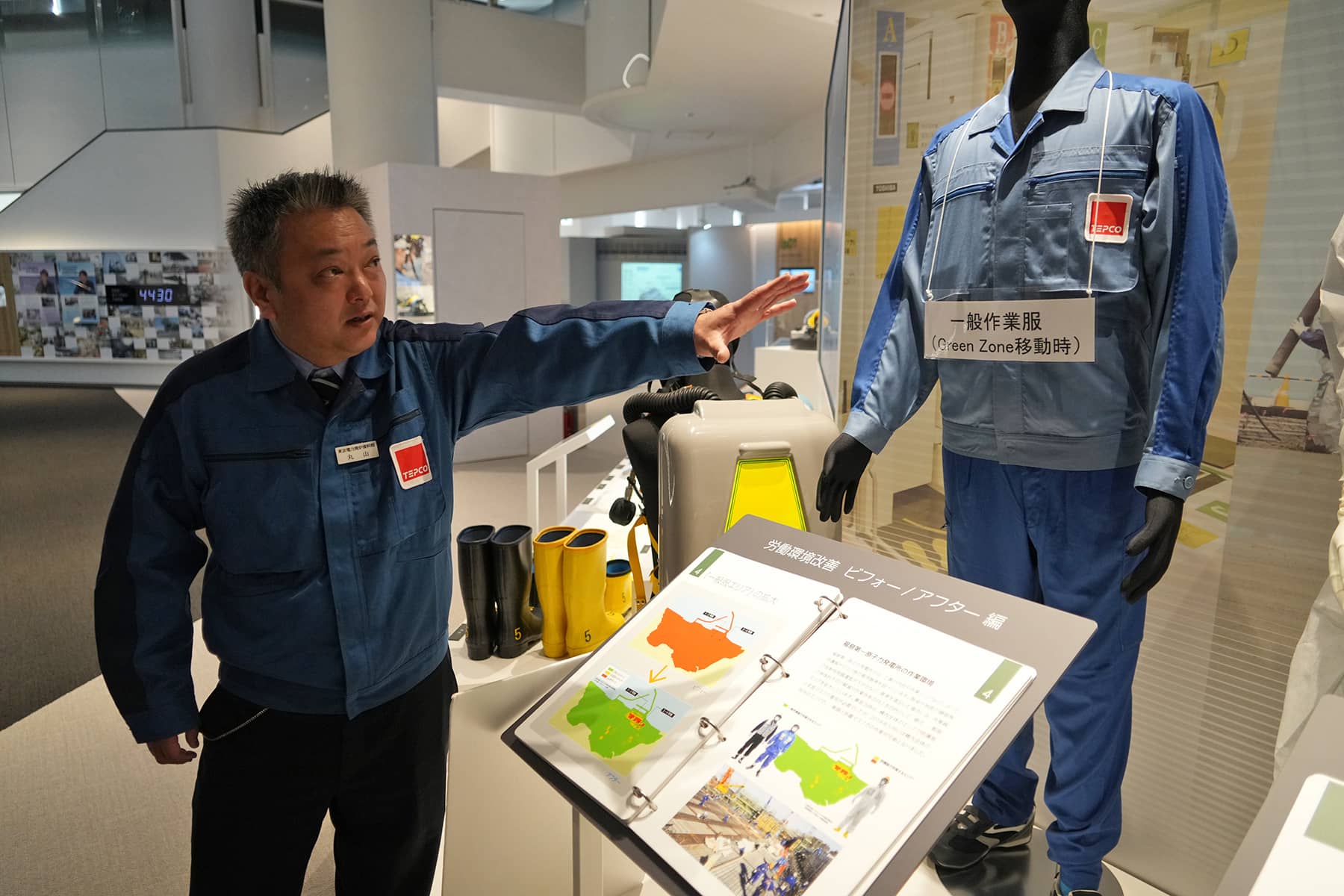
To educate the public about the 2011 Fukushima nuclear accident, and provide updates on the status of clean-up efforts at the radioactive Daiichi Nuclear Power Plant, Tokyo Electric Power Company (TEPCO) established a “Decommissioning Archive Center” in 2018.
Located in the town of Tomioka at the site of TEPCO’s Former Energy Museum, the exhibition center was part of a comprehensive plan to record and preserve the memory of the nuclear accident, a disaster that caused serious damage and loss of life in local communities across the Tohoku region and had a major impact on Japanese society.
“We see it as our mission to communicate the lessons learned from the accident to those both inside and outside the company. We also believe it is important to demonstrate the progress we are making with decommissioning work, and to highlight the very long-term nature of these efforts,” TEPCO said in a statement. “We will do our best to make people feel reassured by the recovery efforts underway at Fukushima, and, in cooperation with other relevant organizations, we intend to pass on the memories and lessons learned from the nuclear accident to future generations.”
A magnitude 9.0 quake on March 11, 2011, triggered a massive tsunami that destroyed the plant’s power supply and cooling systems, causing three reactors to melt and spew large amounts of radiation.
The main initiatives for decommissioning the plant include preventing radiation from contaminating groundwater, removal of spent fuel rods from the reactor building, retrieval of radioactive fuel debris, and advance improvements to environmental safety.
The government of Japan has stuck to its initial 30-to-40-year target for completing the decommissioning. Some experts believe it would be impossible to remove all the melted fuel debris by 2051 and could take 50 to 100 years if achieved at all.
In early February, it was reported that highly radioactive water leaked from a treatment machine at the Fukushima Daiichi nuclear power plant, but no one was injured and radiation monitoring showed no impact to the outside environment.
A plant worker found the leak during valve checks at a SARRY treatment machine designed to mainly remove cesium and strontium from the contaminated water. The machine has been idled for maintenance work.
An estimated 5.5 metric tons of radioactive water — enough to fill two ordinary backyard swimming pools — leaked out through an air vent, leaving a pool of water on an iron plate outside and seeping into the soil around it, TEPCO said, but no radioactive water escaped the compound.
The leaked water was 10 times more radioactive than the legally releasable limit, TEPCO said. The pool of water has been wiped off and the contaminated soil is being removed, said TEPCO spokesperson Kenichi Takahara.
It was not clear when the machine began leaking, but TEPCO said that no problems were detected in an inspection.
The leak may have been caused by valves left open while workers flushed the machine with filtered water — a process intended to reduce radiation levels before the maintenance work, Takahara said. TEPCO said that 10 of 16 air valves that should have been closed were left open during the flushing, and the leak stopped when the valves were closed.
Radiation levels around the plant and inside gutters on the compound have shown no increase.
Takahara offered an apology for the leak, and said that TEPCO is committed to fully investigate and take preventive measures. He said the company pledged to put safety first in decommissioning the plant and to handle contaminated water and discharges “with maximum levels of alertness.”
The filtering machine is part of TEPCO’s controversial wastewater discharge project, which began in August. The Fukushima Daiichi plant suffered triple meltdowns following the 2011 quake and tsunami.
The discharges, which are expected to continue for decades, have been strongly opposed by fishing groups and neighboring countries, including China, which immediately banned imports of all Japanese seafood.
The next round of water discharges is set to begin sometime before May.
Chinese Foreign Ministry spokesperson Wang Wenbin at a daily briefing Thursday said the latest incident highlighted management problems at TEPCO and questioned its ability to safely carry out the decades-long treated water discharge.
Wang urged Japan to respond to the concerns of the international community and handle the discharge responsibly while cooperating with an independent and long-term monitoring system involving neighboring countries and other stakeholders.
The latest leak comes only months after another accidental leak at a separate treatment facility called the Advanced Liquid Processing System, or ALPS.
In that accident, four workers were sprayed with radioactive liquid waste while cleaning the ALPS piping. Although two of them were briefly hospitalized for skin contamination, none showed symptoms of poisoning.
A few weeks later, in late February, a drone small enough to fit in one’s hand flew inside one of the damaged reactors at Japan’s Fukushima Daiichi nuclear power plant Wednesday in hopes it can examine some of the molten fuel debris in areas where earlier robots failed to reach.
Tokyo Electric Power Company Holdings also began releasing the fourth batch of the plant’s treated and diluted radioactive wastewater into the sea Wednesday. The government and TEPCO, the plant’s operator, say the water is safe and the process is being monitored by the International Atomic Energy Agency, but the discharges have faced strong opposition by fishing groups and a Chinese ban on Japanese seafood.
A magnitude 9.0 quake and tsunami in March 2011 destroyed the plant’s power supply and cooling systems, causing three reactors to melt down. The government and TEPCO plan to remove the massive amount of fatally radioactive melted nuclear fuel that remains inside each reactor — a daunting decommissioning process that’s been delayed for years and mired by technical hurdles and a lack of data.
To help on data, a fleet of four drones were set to fly one at a time into the hardest-hit No. 1 reactor’s primary containment vessel. TEPCO plans to probe a new area Thursday.
TEPCO has sent a number of probes — including a crawling robot and an underwater vehicle — inside each reactor but was hindered by debris, high radiation and the inability to navigate through the rubble, though they were able to gather some data. In 2015, the first robot to go inside got stuck on a grate.
Wednesday’s drone flight comes after months of preparations that began in July at a nearby mock facility.
The drones, each weighing 185 grams (6.5 ounces), are highly maneuverable and their blades hardly stir up dust, making them a popular model for factory safety checks. Each carries a front-loaded high-definition camera to send live video and higher-quality images to an operating room.
In part due to battery life, the drone investigation inside a reactor is limited to a 5-minute flight.
TEPCO officials said they plan to use the new data to develop technology for future probes as well as a process to remove the melted fuel from the reactor. The data will also be used in the investigation of how the 2011 meltdown occurred.
On Wednesday, two drones inspected the area around the exterior of the main structural support in the vessel, called the pedestal. Based on the images they transmitted, TEPCO officials decided to send the other two in Thursday.
The pedestal is directly under the reactor’s core. Officials hope to film the core’s bottom to find out how overheated fuel dripped there in 2011.
About 880 tons of highly radioactive melted nuclear fuel remain inside the three damaged reactors. Critics say the 30- to 40-year cleanup target set by the government and TEPCO is overly optimistic. The damage in each reactor is different, and plans need to accommodate their conditions.
TEPCO’s goal is to remove a small amount of melted debris from the least-damaged No. 2 reactor as a test case by the end of March by using a giant robotic arm. It was forced to delay due to difficulty removing a deposit blocking its entry.
As in the past three rounds of wastewater discharges which started in August, TEPCO plans to release 7,800 metric tons of the treated water through mid-March after diluting it with massive amounts of seawater and sampling it to make sure radioactivity is far below international standards.
China’s Foreign Ministry spokesperson Mao Ning on Wednesday accused Japan of risking the whole world with “nuclear-contaminated water” and demanded it stop “this wrongdoing.” Mao urged Japan to cooperate in an independent monitoring system with neighboring countries and other stakeholders.
In early March, images taken by miniature drones from deep inside a badly damaged reactor at the Fukushima nuclear plant show displaced control equipment and misshapen materials but leave many questions unanswered, underscoring the daunting task of decommissioning the plant.
The 12 photos released by the plant’s operator are the first from inside the main structural support called the pedestal in the hardest-hit No. 1 reactor’s primary containment vessel, an area directly under the reactor’s core. Officials had long hoped to reach the area to examine the core and melted nuclear fuel which dripped there when the plant’s cooling systems were damaged by a massive earthquake and tsunami in 2011.
Earlier attempts with robots were unable to reach the area. The two-day probe using tiny drones was completed last week by Tokyo Electric Power Company Holdings, or TEPCO, which released the photos on Monday.
About 880 tons of highly radioactive melted nuclear fuel remain inside the three damaged reactors. TEPCO is attempting to learn more about its location and condition to facilitate its removal so the plant can be decommissioned.
The high-definition color images captured by the drones show brown objects with various shapes and sizes dangling from various locations in the pedestal. Parts of the control-rod drive mechanism, which controls the nuclear chain reaction, and other equipment attached to the core were dislodged.
TEPCO officials said they were unable to tell from the images whether the dangling lumps were melted fuel or melted equipment without obtaining other data such as radiation levels. The drones did not carry dosimeters to measure radiation because they had to be lightweight and maneuverable.
The drone cameras could not see the bottom of the reactor core, in part because of the darkness of the containment vessel, officials said. Information from the probe could help future investigations of the melted debris which are key to developing technologies and robots for its removal, they said.
But the large amount that remains unknown about the interior of the reactors suggests how difficult it will be. Critics say the 30-40 year target for the plant’s cleanup set by the government and TEPCO is overly optimistic.
The daunting decommissioning process has already been delayed for years by technical hurdles and the lack of data.
When the tsunami wave hit the coastal town of Tomioka in 2011 it measured about 65 feet. It killed 24 residents, with 6 people still missing. In 2023, a memorial marker was finally installed to honor the victims of the natural disaster.
After a review of the area, a site was selected for the stone monument with a view of the sea. It includes the names of the victims from the area, and expresses condolences to the victims of the tsunami and earthquake.
Tomioka’s Great East Japan Earthquake Memorial Monument was designed to “convey the history of the area and prevent memories from fading” for future generations.
Almost all of the homes of about 50 households were washed away, scattering survivors throughout the prefecture and beyond. The evacuation order for the administrative district was only lifted in March 2020, with the aim to attract business ventures.
Residents did not begin to return to TT in significant numbers until after April of 2023, when about 20% town was officially reopened.
More than 160,000 residents in the areas surrounding the nuclear power plant were evacuated after a triple meltdown at the facility in March 2011.
An evacuation order was lifted in several sections of another hard-hit town, Namie, northwest of the plant, also in 2023.
Currently, 2.4 percent of the prefecture remains a no-go zone. Background radiation levels in towns 20 kilometers around the disaster-stricken power plant are within safe levels. But affected towns designated as part of a “difficult-to-return zone,” like Futaba, Okuma, Soma, and Odaka have been slow to recover.
3.11 Exploring Fukushima
- Journey to Japan: A photojournalist’s diary from the ruins of Tōhoku 13 years later
- Timeline of Tragedy: A look back at the long struggle since Fukushima's 2011 triple disaster
- New Year's Aftershock: Memories of Fukushima fuels concern for recovery in Noto Peninsula
- Lessons for future generations: Memorial Museum in Futaba marks 13 years since 3.11 Disaster
- In Silence and Solidarity: Japan Remembers the thousands lost to earthquake and tsunami in 2011
- Fukushima's Legacy: Condition of melted nuclear reactors still unclear 13 years after disaster
- Seafood Safety: Profits surge as Japanese consumers rally behind Fukushima's fishing industry
- Radioactive Waste: IAEA confirms water discharge from ruined nuclear plant meets safety standards
- Technical Hurdles for TEPCO: Critics question 2051 deadline for decommissioning Fukushima
- In the shadow of silence: Exploring Fukushima's abandoned lands that remain frozen in time
- Spiral Staircase of Life: Tōhoku museums preserve echoes of March 11 for future generations
- Retracing Our Steps: A review of the project that documented nuclear refugees returning home
- Noriko Abe: Continuing a family legacy of hospitality to guide Minamisanriku's recovery
- Voices of Kataribe: Storytellers share personal accounts of earthquake and tsunami in Tōhoku
- Moai of Minamisanriku: How a bond with Chile forged a learning hub for disaster preparedness
- Focus on the Future: Futaba Project aims to rebuild dreams and repopulate its community
- Junko Yagi: Pioneering a grassroots revival of local businesses in rural Onagawa
- Diving into darkness: The story of Yasuo Takamatsu's search for his missing wife
- Solace and Sake: Chūson-ji Temple and Sekinoichi Shuzo share centuries of tradition in Iwate
- Heartbeat of Miyagi: Community center offers space to engage with Sendai's unyielding spirit
- Unseen Scars: Survivors in Tōhoku reflect on more than a decade of trauma, recovery, and hope
- Running into history: The day Milwaukee Independent stumbled upon a marathon in Tokyo
- Roman Kashpur: Ukrainian war hero conquers Tokyo Marathon 2024 with prosthetic leg
- From Rails to Roads: BRT offers flexible transit solutions for disaster-struck communities
- From Snow to Sakura: Japan’s cherry blossom season feels economic impact of climate change
- Potholes on the Manga Road: Ishinomaki and Kamakura navigate the challenges of anime tourism
- The Ako Incident: Honoring the 47 Ronin’s legendary samurai loyalty at Sengakuji Temple
- "Shōgun" Reimagined: Ambitious TV series updates epic historical drama about feudal Japan
- Enchanting Hollywood: Japanese cinema celebrates Oscar wins by Hayao Miyazaki and Godzilla
- Toxic Tourists: Geisha District in Kyoto cracks down on over-zealous visitors with new rules
- Medieval Healing: "The Tale of Genji" offers insight into mysteries of Japanese medicine
- Aesthetic of Wabi-Sabi: Finding beauty and harmony in the unfinished and imperfect
- Riken Yamamoto: Japanese architect wins Pritzker Prize for community-centric designs
MI Staff (Japan) with Mari Yamaguchi
Lее Mаtz

